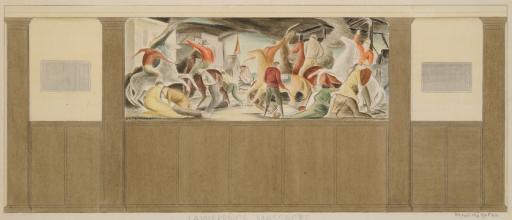Lawrence Massacre, Mural design for the Fort Scott Post Office, Ethel Magafan
Artwork Overview
Ethel Magafan, artist
1916–1993
Lawrence Massacre, Mural design for the Fort Scott Post Office,
1937
Where object was made: United States
Material/technique: watercolor; paper
Dimensions:
Image Dimensions Height/Width (Height x Width): 19.9 x 48.4 cm
Image Dimensions Height/Width (Height x Width): 7 13/16 x 19 1/16 in
Sheet/Paper Dimensions (Height x Width): 29.5 x 57.4 cm
Sheet/Paper Dimensions (Height x Width): 11 5/8 x 22 5/8 in
Mat Dimensions (Height x Width): 20 x 25 in
Image Dimensions Height/Width (Height x Width): 19.9 x 48.4 cm
Image Dimensions Height/Width (Height x Width): 7 13/16 x 19 1/16 in
Sheet/Paper Dimensions (Height x Width): 29.5 x 57.4 cm
Sheet/Paper Dimensions (Height x Width): 11 5/8 x 22 5/8 in
Mat Dimensions (Height x Width): 20 x 25 in
Credit line: Museum purchase
Accession number: 1994.0003
Not on display
If you wish to reproduce this image, please submit an image request






